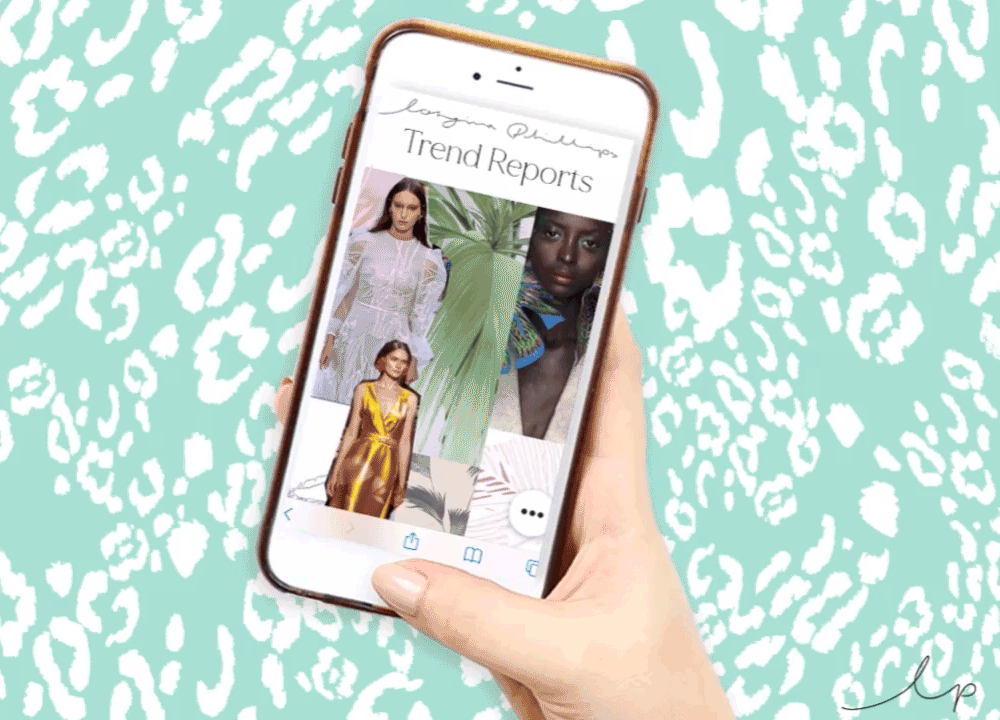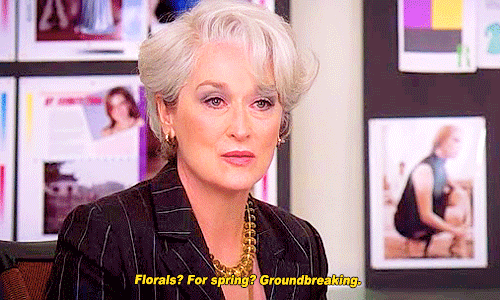Words by Lyndsay, Senior Designer.
Inspiration can be found everywhere - from the latest runway to a texture on a park bench. That’s the beautiful thing about creative minds, we view the world with a curious eye.
With our regular schedule of international travel on the back-burner for now, we’ve all been turning to our friend the internet to feed that creative spark. And sure, it’s an amazing resource but it can also be a major time and energy suck. Especially when you want to create a unique on-trend, commercially viable print without spending days distilling your research into a useable creative brief. Phew!
But here’s the good news - there’s an industry-recognised shortcut to do all of this for you. We’re talking Trend Reports. But is it really worth it for a fabric designer? Can they help save you time and sell more designs? We’ve talked to our customers and our amazing team of in-house designers to get a clear answer (hint, it’s a resounding ‘yes!’). Read on to learn how.

1. Escape Digital Overload
Ok, we all love Instagram. And Vogue Runway. And Pinterest. The list goes on. In fact, it’s never-ending - we love the internet almost too much as a resource.
Between digitally working from home, endless social-media scrolling, and zoom burnout, it’s fair to say that screen fatigue and digital overload are a real thing. When researching the latest trends online, there’s a fine line between inspired and exhausted. Luckily using trend boards that provide curated inspiration can really help to alleviate this, shortcutting your way to relevant trend direction.
LPD Designer Lilly outlines her process saying, "Previously I would have found my own references from the current market, so I’d look in high street shops for existing trends, on Vogue Runway for leading trends and on Pinterest and Instagram for more traditional Art techniques and colour inspiration. Trend boards cut out a lot of this research process. It speeds up our work as designers and means we aren’t filtering through a lot of not-so-helpful imagery."

2. Get Validation of Relevant Trends
So many trends, so little time! Even if you’ve done all the work of collating your research into trends, how do you know which ones are worth pursuing? Unfortunately spotting an avant-garde trend on runways doesn’t guarantee that your customers will want to buy it.
As our Creative Director Bec says, "Having an eagle eye for commercially viable trends comes with experience and can take years to develop. Years of working with clients and knowing what print trends sell and which trends generally trickle through from runway to high-street helps us design our boards."
Sure, you’ll have your own instinct on trends, but getting validation from an outside source can really save you time and energy when it comes to creating a collection of fabric designs. Our customer Jo, a freelance designer, had this to say about the benefits of using our Trend Report service, “They confirm trends you have been noticing and trends you haven’t noticed at all. Working by myself there are fewer opportunities to bounce ideas so I have found these really useful.”

3. Dodge Designer's Block
We’ve all been there. You sit down at your desk, pen in hand with deadlines to fulfil and - nothing, zero inspiration hits. Everything you look at seems wrong, and everything you create just doesn’t work. This is where a well-curated Trend Board really starts paying its way. Having a concise set of images that strike that perfect balance between concept and actualisation of the trend can be a life-saver in those stuck-in-a-rut moments.
As LPD Designer Steph says, "Creating new prints daily can be incredibly difficult and the storyboards give you a quick burst of inspiration to get your brain moving." So how to interpret them when you’re in need of a quick fix for designer's block? Our Top Tips:
Combine the style of one reference with the content of another to create unique artwork in on-trend handwriting. Then use the colour tabs provided to develop colourways.
Don’t be scared of using the references literally to spark your creativity when you’re stuck. Your unique handwriting will ensure that your interpretation of the boards results in a fresh take.

4. Create On-Trend Colourways
As a Senior Designer, I’ve come to learn the crucial power of both good and bad colour choices. It’s amazing how even tweaking one tone can completely reinvigorate your design. Or with the wrong choice, make it look drab or last-season. Colour is often the thing that sells your design at sales appointments, with the right hue catching the buyer's eye.
Colour tabs on a fresh trend board to literally pull colour combinations from can be a great time-saver, and keep you confident in the knowledge that your design looks new and exciting. LPD designer Bec G says the colour tabs “give me ideas for new colour combinations to make designs pop, or inspire me to use colour palettes that I might not normally use.” Whilst Steph told us her failsafe tactic for using the colour tabs, saying, “I always pick two warm and two cooler colours and a pop of a contrasting colour where fitting.”
Need some inspiration now? Check out our blog post 5 Ways to Use 2021's Hottest Colours to Sell More Fabric Designs.

5. See Trends With Fresh Eyes
Ah, the iconic words of Miranda Priestly in The Devil Wears Prada. (We still love that movie!) But for fabric designers, those words contain a whole lot of truth within the irony. We see new iterations of spring florals every damned year. And as creatively tedious as that can be, there’s a reason for their recurrence; they sell! They’re a pretty, easy-to-wear wardrobe staple that comes back time and time again.
So how to see the trend with fresh eyes and avoid recycling the same look as last year? Trend boards can play a vital role in giving you a new slant on an old favourite - whether it’s up-to-date colour, style, scale, or placement.
As our designer Bec G says, “We see so many designs and trends, sometimes you feel like you have seen everything! So it's great to get the trend boards as often it is a different new take on a trend that has been around before. This inspires me to experiment and try new techniques in my painting and drawing to create designs.”

6. Get Focused on Fabric Design
Here at LPD, we’re totally immersed in the world of fabric design. It’s in the air we breathe. And yet, it’s easy to forget that we actually work in a very niche part of the industry. So much so, finding trend reports that look entirely at prints for fabric design is a bit of a unicorn in trend services. And we get it. Generally, services are pretty expensive, and if a lot of what you’re looking at isn’t relevant to you what’s the point?
Our Trend Boards deliver a forecast focused uniquely on creative prints and trends that sell, walking the line between creativity and commerciality. Designer Lilly says, “The specific and careful curation of the LPD boards means the trend is super clear and easy to design for and means we are producing ahead of any oversaturated existing trend and with a unique and fine-tuned take.”
The takeaway? Trend Boards are a vital tool for fabric print designers to boost efficiency, saving you time and helping you to sell more designs. Give your creativity a boost and get yours here.


